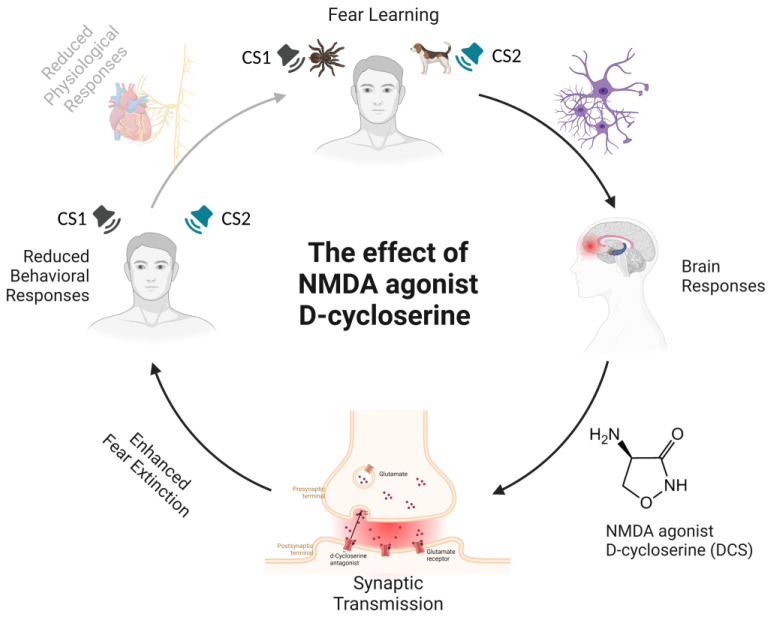Figure 1.
Schematic representation of the amelioration of N-methyl-D-aspartate (NMDA) receptor activity-related effects by the administration of agonist D-cycloserine (DCS) during fear extinction. During a fear-learning paradigm, a previously neutral stimulus (the conditioned stimulus) acquires emotional significance through pairing with an aversive stimulus. The aversive stimulus elicits a range of automatic, unconditioned fear responses, such as freezing and increased heart rate or blood pressure. After a few pairings, the presentation of the conditioned stimulus alone is capable of eliciting a conditioned fear response. The neural networks underlying fear learning mainly include the amygdala, prefrontal cortex, and hippocampus. Connections between these cortical and subcortical brain regions regulate the acquisition and extinction of fear. The activation of NMDA receptors—ionotropic channels that allow calcium ions into the cell—is necessary for long-term potentiation processes underlying fear learning. DCS, an NMDA partial antagonist, binds to one of the subunits of the NMDA receptor complex and changes its shape. The result is that glutamate opens up the channel and lets more calcium in, leading to boosted excitation by raising the glutamate levels in the interneurons. The specific effects of DCS in humans include enhanced fear extinction memory retention, expressed as attenuated conditioned responses during extinction recall on subjective (i.e., valence and arousal ratings) and physiological (SCR, BOLD response) levels. Notes. CS1 = Conditioned Stimulus 1; CS2 = Conditioned Stimulus 2; DCS = D-cycloserine; NMDA = N-methyl-D-aspartate.

